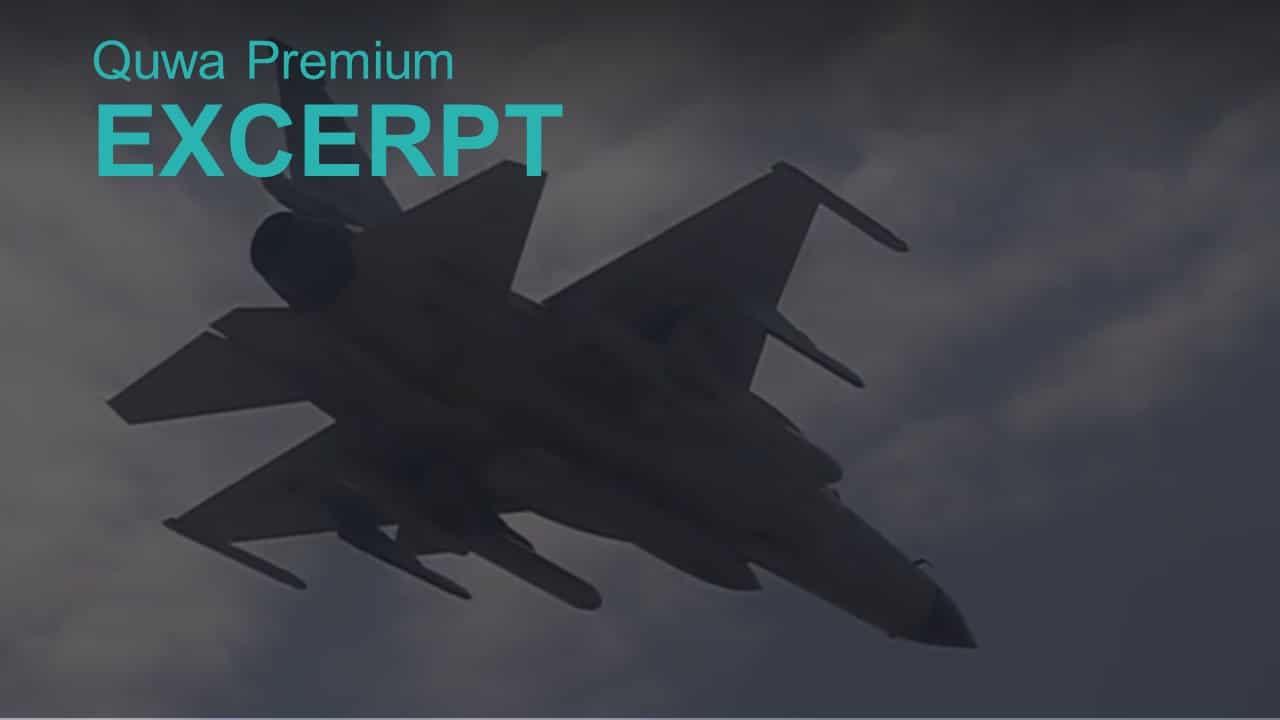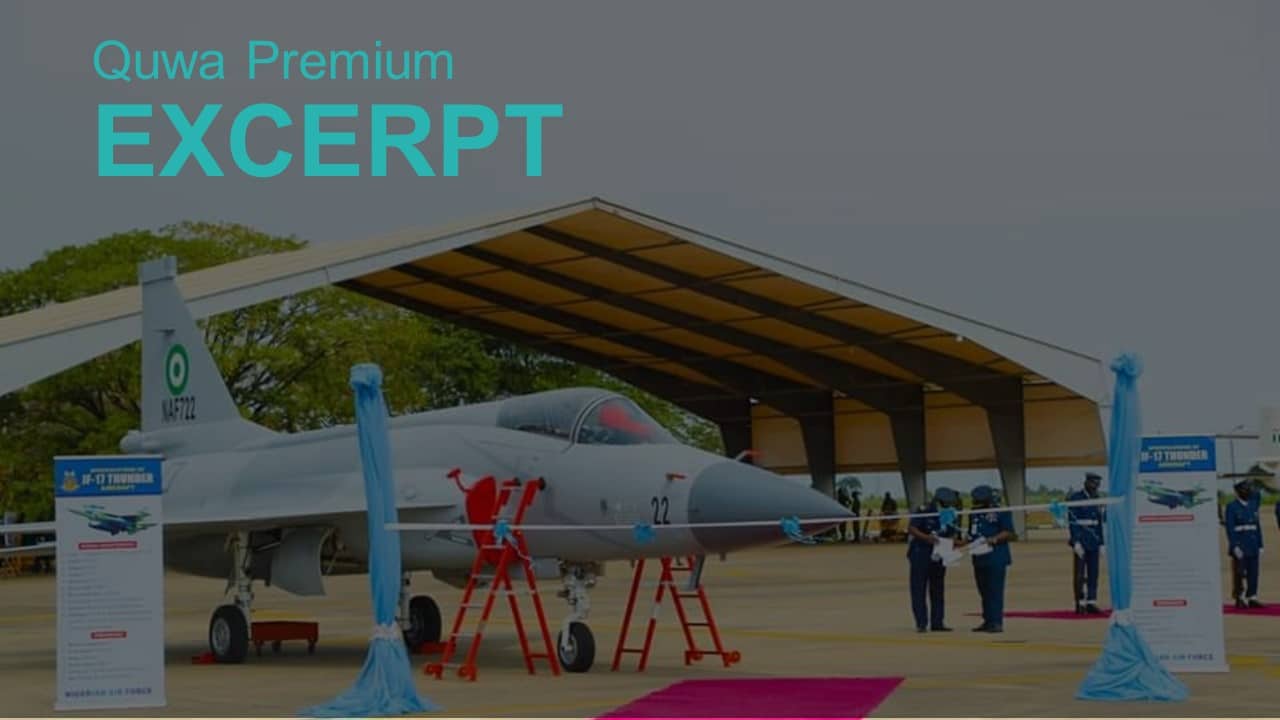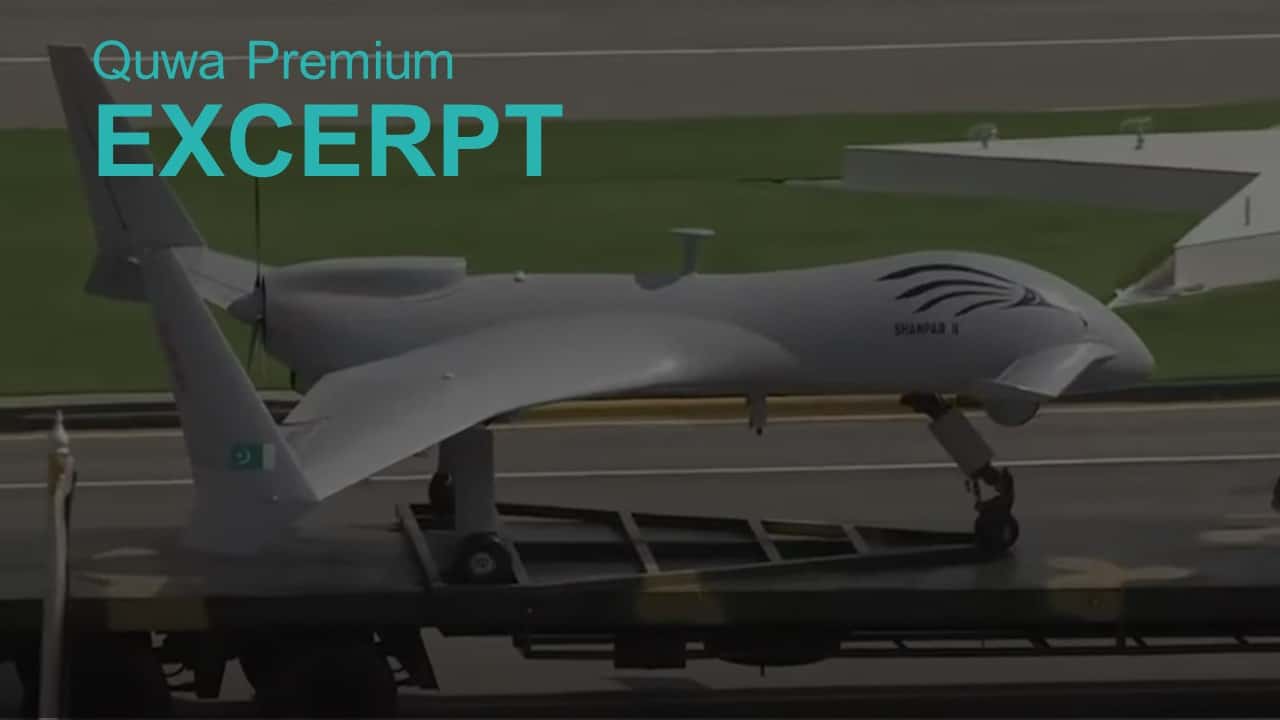1997Views

Why the JF-17 Block 3 Matters to the Pakistan Air Force
The JF-17 Block-III is the first major iterative upgrade to the JF-17: it will introduce an active-electronically scanned array (AESA) radar, an integrated electronic warfare (EW) and electronic countermeasures (ECM) suite, updated avionics suite, three-axis/all-digital fly-by-wire (FBW) flight-control system, a single-panel multi-function display (MFD)-based cockpit and helmet-mounted display and sight (HMD/S) system.[1] As per the previous PAF CAS, the JF-17 Block-III is slated to enter production in 2019 or 2020.[2]
Speaking to Quwa, retired PAF officer and now historian and commentator Air Commodore Kaiser Tufail views the Block-III as a promising qualitative boost for the PAF fighter fleet:
“With AESA radar, the JF-17 should be able to resist enemy jamming [via its] many small transmit-receive modules (TRM), making it a much more survivable platform. The aircraft’s BVR capability is also expected to be greatly enhanced, especially in an environment increasingly beset with EW advances. Assuming the AESA radar works as expected, the JF-17 would have a more advanced radar than that of the F-16, thus becoming the PAF’s preferred platform in the air-to-air role.”
Indeed, the implication of the JF-17 assuming the leading qualitative position ahead of the F-16, especially as the ‘preferred’ air-to-air platform, would be significant. Frankly, a cursory look of the facts on paper in terms of what the Block-III will include compared to what the PAF’s F-16s have will aptly illustrate that the Block-III will be the qualitatively superior platform. Note: this is all in reference to the F-16s in PAF service, for which there is no tangible upgrade path – e.g. F-16V – due to end-user restrictions from the US…
Returning to the Block-III’s AESA radar. Generally speaking, the availability of multiple TRMs for tracking and scanning (wherein each can do so through a different frequency) enables the JF-17 to continue its air-to-air operations in dense EW/ECM environments. In practical terms, this is important of the PAF seeing the growth of EW/ECM-equipped assets in the Indian Air Force (IAF) and Indian Navy (IN).
Should these manifest as threats over Pakistani airspace, the PAF will have to rely on its best – in terms of defensibility and capability – to counter them, and the Block-III would be the best equipped to do so (notwithstanding the inclusion of another platform, though increasingly unlikely to occur prior to Project Azm)…
End of Excerpt (376/1,541 words)
You can read the complete article by logging in (click here) or subscribing to Quwa Premium (click here). If you are already logged in, you can access the article by clicking here.
For More on Pakistan’s Fighter Aircraft Development Efforts, Check Out:
- Pakistan Makes Progress on Next-Gen Fighter Development
- Pakistan Inches Closer to Inducting the JF-17 Block 3
- Pakistan Seeking ‘Data Link Items’ for Indigenous MALE UAV
[1] Alan Warnes. “JF-17 Thunder: Pakistan’s multi-role fighter.” 2015. Note: a special publication released by the Pakistan Air Force during the Paris Air Show of 2015. Note: the inclusion of a single-panel MFD and three-axis fly-by-wire (FBW) was directly revealed to Quwa by a Pakistan Air Force (PAF) official.
[2] PTV interview with Air Chief Marshal Sohail Aman, the Chief of Air Staff of the Pakistan Air Force, on 23 March 2017.


